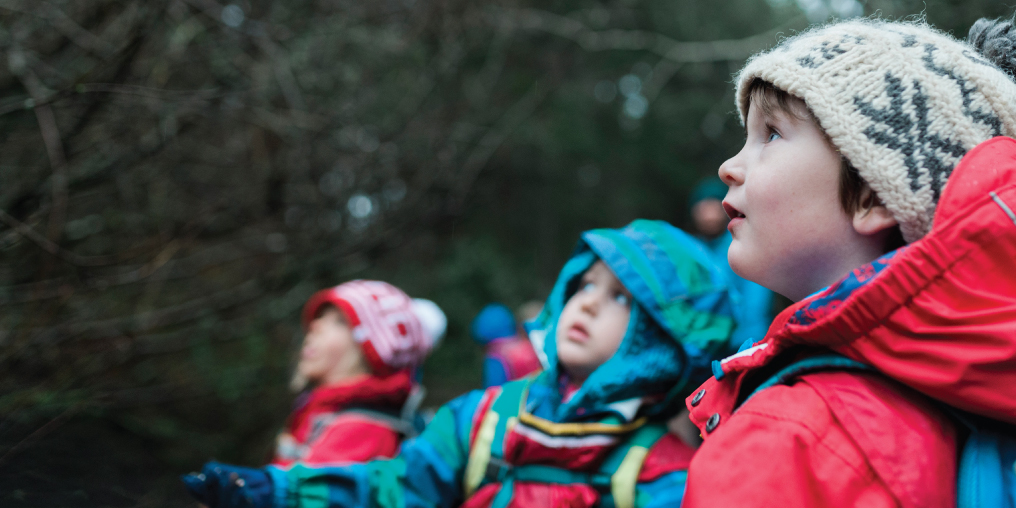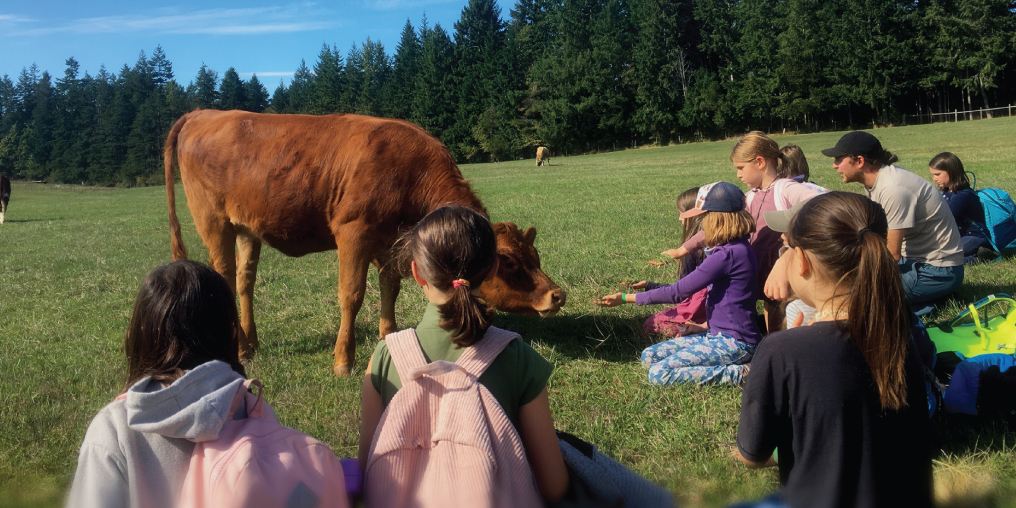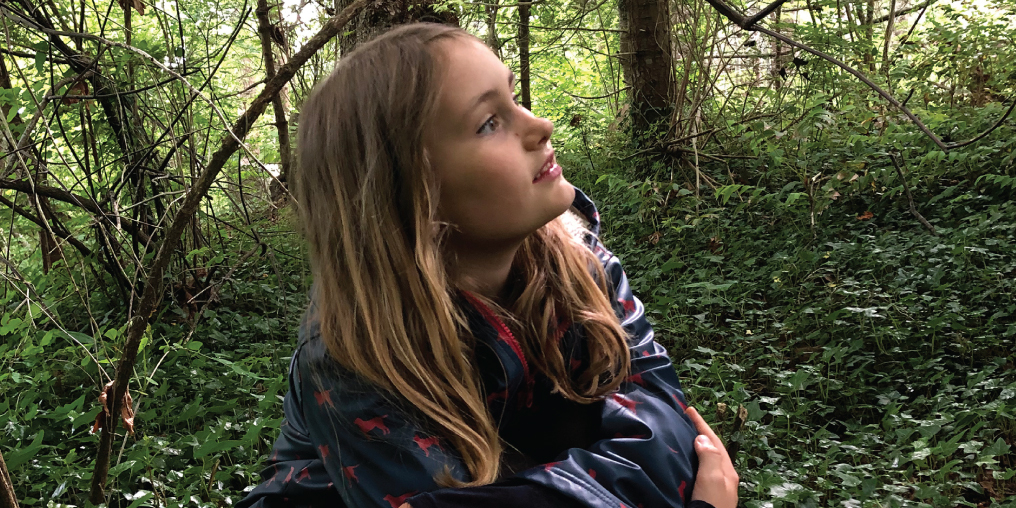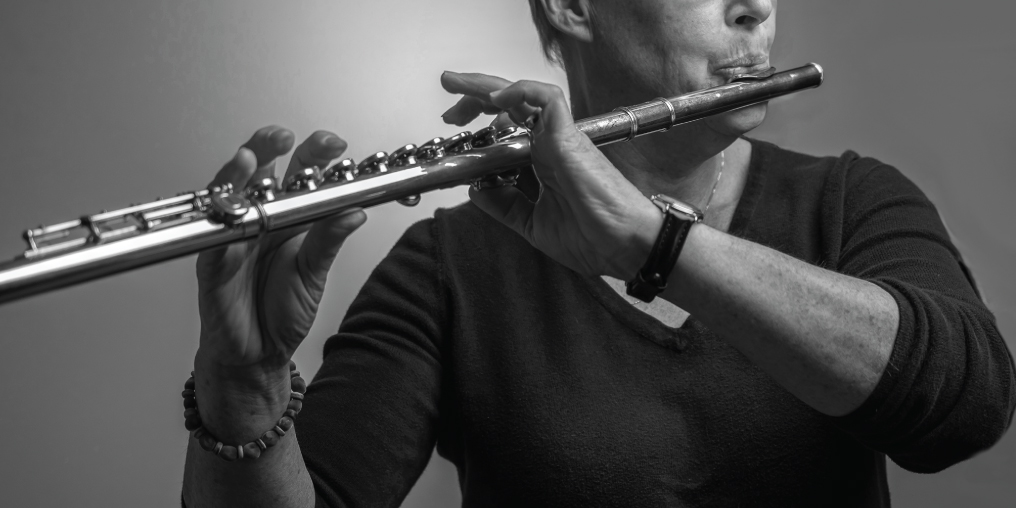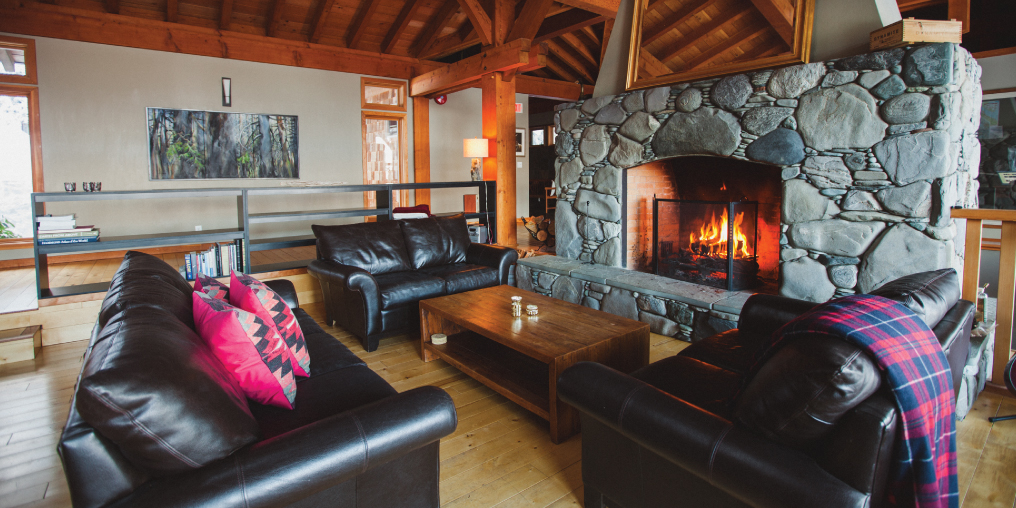I love my job.
Not only do I spend five mornings a week with preschoolers, I get to do it in the beautiful Cumberland Community Forest. I have loved teaching young children for many years, but to teach outside full-time is the realization of a dream I’ve had for some time. When I taught out of my home, we spent many hours outside, and during that time I saw the children thrive. By following their lead and taking advantage of what nature brought us each day, the children made deep connections to the earth and to each other. Reading Louv’s Last Child in the Woods further cemented my wish to take learning fully outdoors—away from my mostly manicured yard and into the woods. // Trevor often sings “The earth moves around the sun,” and now says he wants to be an astronaut. At first, in October, he wanted to be a teacher. He also sings and signs other songs, especially the Hand-In-Hand ready to explore song. He seemed pleased with himself when he identified dog tracks in the mud, as well as bicycle tracks. He tells his mom the forest is important because “we explore there.” “Everyone drinks [water], bears, birds, maybe not fish – but fish live in water. Bears eat fish.” His mother says “We really feel blessed to have Hand-in-Hand Nature School as part of my preschooler’s life. We are so thankful for where we live and the nurturing experience they have here, and I don’t know if you can tell but we’re very proud of him! It’s evident how much the teachers love their jobs by how much the children enjoy being there.” // Rhythmic grunts impart integral knowledge from father to son on how to impale unsuspecting fish with a harpoon made of bone, twine, and a stick. In the shade of a tree, the child stands poised near a burbling brook with his own crudely fashioned harpoon. Watching fish lazily glide by, he giggles with joy, then awkwardly throws his harpoon —splash! This ancient scene illustrates learning as a consequence of trusting relationships, observation, playtime in nature, and necessity.
Don’t get me wrong – our days aren’t all sunbeams and smiling faces. We can experience sideways rain, slushy snow, or icy winds. Children can be uncomfortable with cold feet or wet mittens. There are challenges to overcome, like navigating rugged terrain, toileting in the rain, and learning how to take turns. Each of these shared experiences brings our class closer together and gives each child a sense of strength, of ability, of independence. In many ways, these days teach us the most. // Theo says “I enjoy playing with my forest friends and showing them how to do cool jumps! I have fun playing in snow, I am happy to see winter again. I like learning about nature and doing crafts. I like to give and get high fives with my teachers when we say hi & goodbye. I like to play at Village Park after preschool with James & Luke.” // Fast-forward about 90,000 years when students began trudging into classrooms. Between the advent of Napoleon’s defeat over Prussia and the Industrial Revolution, it was decided that education was best served standardized, compulsory, and extremely structured. Obedient workers, soldiers, and citizens would be the result. Desks, authoritative teachers, and punishments would be the tools to serve the system now known as school.
But every so often, magic happens—the weather is beautiful, the children work seamlessly together, and the forest gives us opportunities that engage the children in dynamic ways. One such day sticks out in my mind. On our way to a new site, we discovered that the trail had turned into a river! This little, fast-running stream immediately engaged the group on many levels. Children began floating things downstream, diverting water by building walls, digging new paths for the stream, and using buckets to carry water from the stream to a hole they had dug. Standing back, watching the children at work/play, with the Beaufort Mountains looking down on us, was truly a perfect moment—the stuff dreams are made of. // Dawson likes school “because there’s sticks.” “Some plants are mushrooms and some mushrooms are poison and you can’t eat the poisons. I’ve played with water and it can make a waterfall,” Torin knows, “You need to keep the streams clean so the fish stay healthy.” From his mother: whenever people ask him where he goes to school he gets kind of poetic and explains with his words and his hand movements that his school “doesn’t have any walls, and it doesn’t have a roof…my school is in the forest.” // Since the birth of schooling there have been many thinkers who believed that learning comes instinctively, not institutionally. In the 1950s, the idea of outdoor education was seen as an intuitive, progressive pedagogy. Swedish and Danish schools began employing a forest school model. Essentially, it’s the same model that Hand-in-Hand follows. In these programs, children have continuous access to natural environments where play, and the child’s interests, guide the curriculum.
I believe in my work no matter the weather—it’s what I truly enjoy. I know it is meaningful and important. Helping children tune into the cycle of the seasons and instilling a lifelong love of nature creates people who care about, and for, the earth. I love my job, every day. // “Nature grows nature food, for the animals. Trees, plants, and rocks [live in the forest],” Gemma reports, “we don’t see animals, but there are tracks: deer tracks, rabbit tracks, but we don’t see them because they tip-toe when they see people.” Kaya likes to “slide down hills and run, run, run through puddles. It’s my school.” // Forest schools can be found around the world. With guidance from compassionate and environmentally-minded educators, children become immersed in nature and the limitless possibilities this provides. Like the child from 90,000 years ago, not much has changed. Picture a child with sticks, rope, and buckets at the edge of a stream. They may struggle to pull up a bucket and inadvertently experience gravity. They may wonder what causes the stream to rise and fall at different times of the year. Will the child imagine fishing for survival as humans have for millennia? All while simply playing—and imprinting positive memories to be internalized for a lifetime.
Hand-In-Hand Early Years Nature Education Program operates in Cumberland at the Coal Creek Historic Site. In September 2016, there will be a Comox location in Filberg Park.





